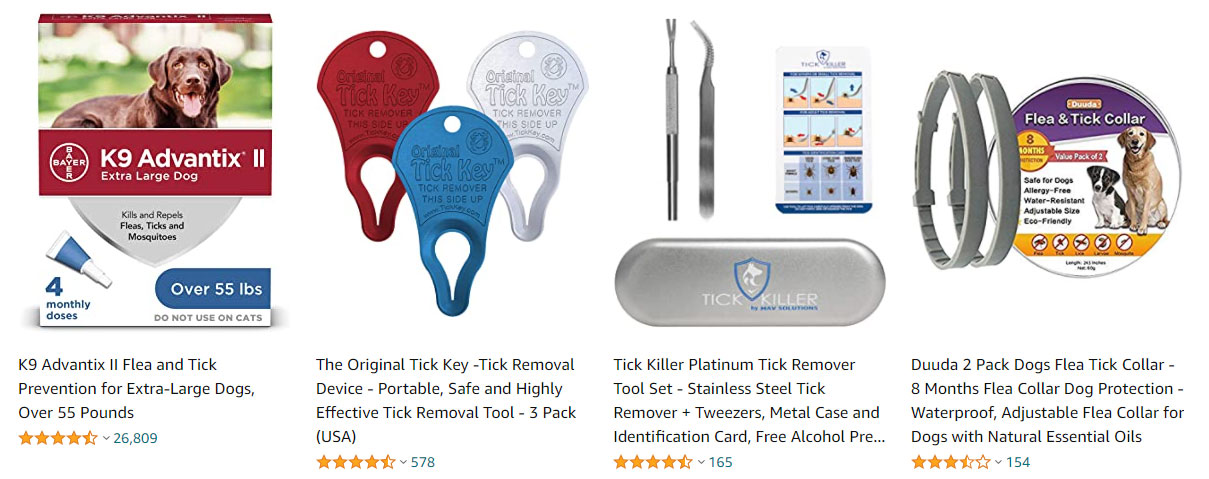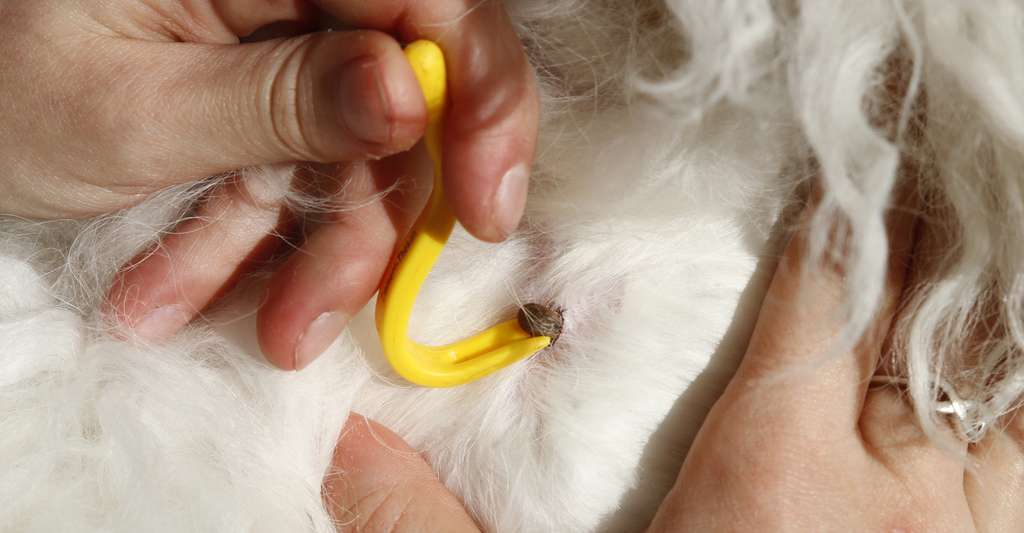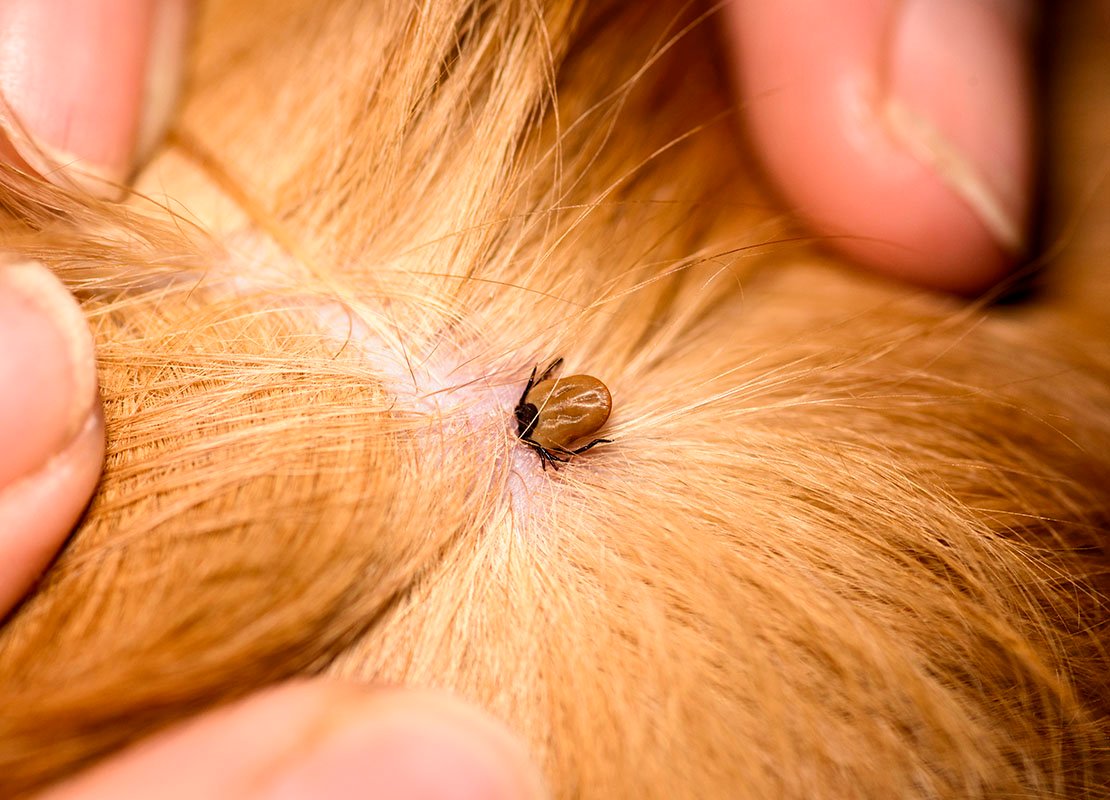Remove ticks from dogs
Ticks are responsible for many diseases and infections, sometimes very serious, in dogs and humans. With the arrival of the warm weather, the great invasion of external parasites begins, although they also proliferate throughout the year.
In order to protect your pet from these undesirables and, above all, from the pathologies they carry, it is recommended to administer an anti-parasite treatment every month. However, sometimes this type of medication is not 100% effective and a tick can still attach itself to the back of a dog that is regularly treated.
In this case, the best thing to do is to remove the parasite as soon as possible to limit the risk of infection, which usually occurs within 24 hours of the bite. Unfortunately, removing a tick cannot be improvised and can only be done properly with the help of an appropriate tool.
Tick pliers, also known as tick hooks, are specially designed to extract the entire parasite to minimize the risk of infection.
What is a tick remover for dogs?
A tick remover is an instrument specifically designed to remove ticks that have bitten your dog without breaking their bodies or bursting them. Indeed, the particularity of these parasites lies in their ability to attach themselves to the dermis of animals - and humans - by planting their heads, also called rostrum.
Removing the tick without the proper tool may not remove the entire parasite, and may inadvertently squeeze its body, sending its saliva and other potentially infected fluids into the dog's body. This puts the animal at major risk of infection, not only because of the presence of a foreign body in its dermis, but also because of the high risk of transmission of Borrelia bacteria.
The tick-pulling hook is similar to a spatula, with a flat, curved tip that has a slit wide enough to surround the rostrum, but too narrow to allow the tick's body to pass through. Once the tick remover is positioned as close as possible to the dog's skin, it is enough to pull gently while turning the hook to extract the entire parasite.

Why use a tick hook for dogs?
The tick hook is designed to minimize the risk of infection by removing the entire head of the parasite from the animal's dermis. Without this type of instrument, there is an increased risk of infection due to incomplete extraction of the rostrum or a burst tick.
Lyme disease
Ticks carry a bacterium (Borrelia) that causes a well-known pathology called Lyme disease. This disease first manifests itself by a redness that appears around the place where the animal was bitten and gradually spreads before disappearing. Symptoms similar to those of a flu-like illness are also typical of Lyme disease (fever, apathy, body aches, etc.).
At this stage, it is crucial to visit a veterinarian so that your dog can receive early antibiotic treatment. If left untreated, the disease can progress - not systematically - to a second phase with a more uncertain prognosis. The animal may present neurological damage, joint pain, muscle pain or dysfunction of certain organs. Symptoms may last for years or for life, and at this stage there are only treatments to relieve the dog's pain, as the disease cannot be cured.
Piroplasmosis
Piroplasmosis is the infection of the dog's blood by a microscopic parasite (Babesia canis) which is often carried by a tick. This tiny parasite destroys the red blood cells which are essential to the good functioning of the dog's body, leading to many potentially serious disorders (liver jaundice, kidney failure, shortness of breath...). If not treated urgently, piroplasmosis leads to the rapid death of the dog in a few days.
Ehrlichiosis
Ehrlichiosis is a bacterium (Ehrlichia canis) transmitted by ticks that attacks the white blood cells that ensure the dog's immune system. The symptoms are very similar to those of piroplasmosis, but the disease progresses more rapidly and therefore requires even faster treatment.
To limit the risk of infection in your dogs, it is strongly advised to inspect them carefully after each walk in search of possible ticks. The sooner these parasites are extracted from the skin of your faithful companion, the less likely it will be to contract a serious disease or infection.

How to choose a dog nipper?
There are different types of dog nipper hooks, made of different materials and in different sizes.
Plastic or metal
Most mosquito hooks are made of hard plastic or stainless steel, characteristics that have little impact on their effectiveness. In reality, the choice of a stainless steel or plastic tool is more about your budget. Stainless steel fish hooks are more expensive, but also more durable, while plastic ones are very inexpensive, but sometimes fragile.
One difference, however, is the ease of cleaning and sterilization of these items. Even if the tick tweezers are not intended to be in direct contact with a wound, it does not cost anything to sterilize them before and after each use, which can be easily done by passing a stainless steel tick remover a few seconds in the flame of a lighter. For plastic objects, it is necessary to carry a bottle of antiseptic product and a sterile compress, which is less practical and more cumbersome.
The size
You will find on the dog accessories market tick hooks of different sizes, which are adapted to the size not of your dog, but of the parasite you are trying to remove. For the smallest ticks, those that have not yet had time to gorge themselves on your dog's blood, a smaller and thinner hook will be easier to handle. For larger ticks, a thicker hook with a slightly longer handle will be just as effective and more ergonomic.
Simplicity of use
If you are a novice in tick extraction, the best solution is probably to turn to an instrument whose design leaves no room for ambiguity. Its use will then be more instinctive and will facilitate your task when the time comes! Tick-pulling hooks with a round handle will also make the maneuver easier, since it is necessary to turn while pulling to correctly remove a tick.


